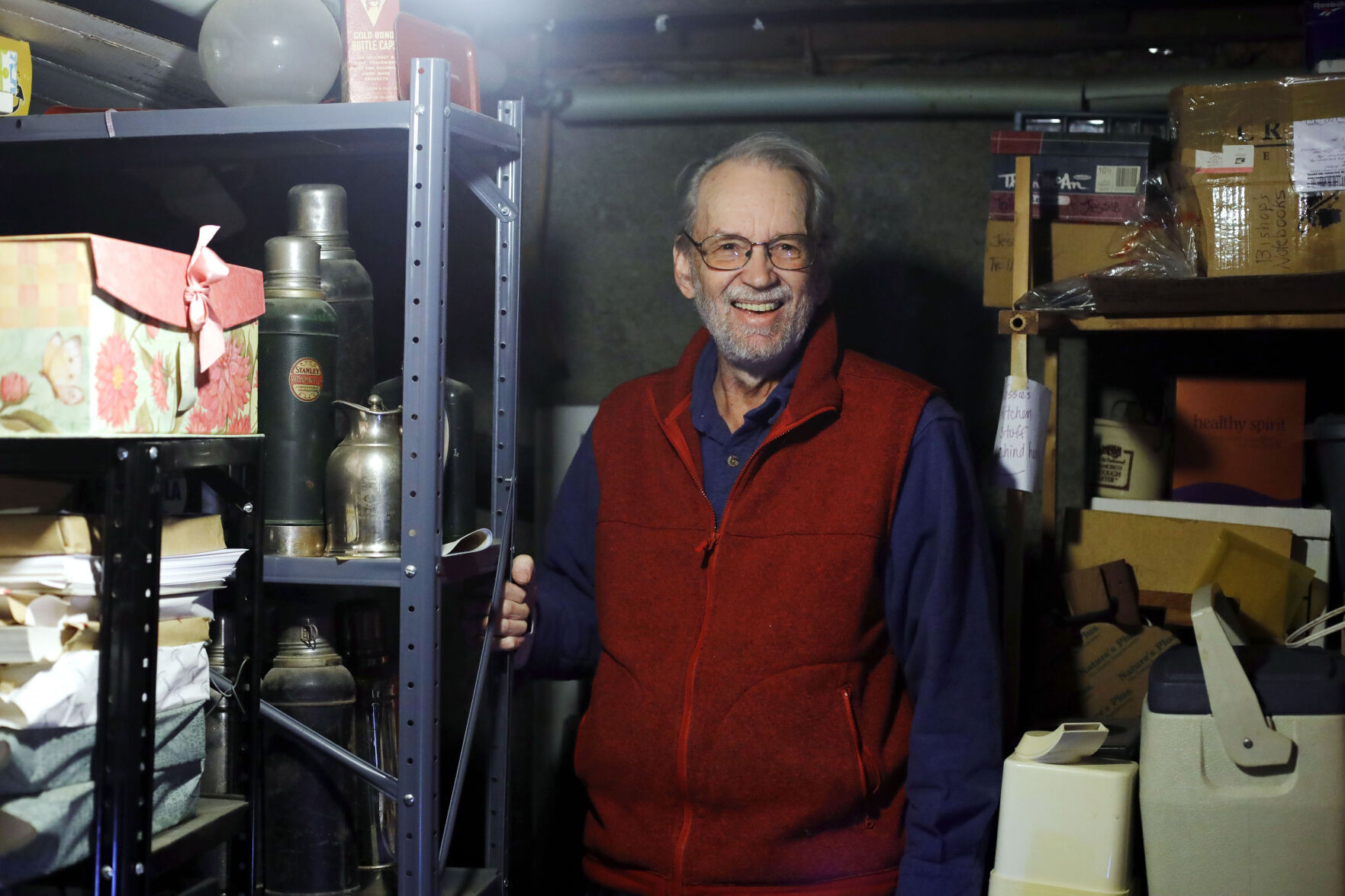The Stanley cup. Just mention the name, and you might conjure images of long lines, social media frenzy, and a kaleidoscope of vibrant colors. These oversized, insulated tumblers have surged in popularity, especially among millennials and Gen Z, becoming a must-have accessory. But beyond the viral trends and online buzz, lies a fascinating history rooted in American ingenuity and a quest for a simple yet essential need: a hot cup of coffee. This brings us to the question many are asking amidst the Stanley craze: Where Are Stanley Cups Made? The answer is a journey through time and across continents, starting in a small town in Massachusetts and evolving to global production.
The Stanley Cup Craze: More Than Just a Trend
It’s impossible to ignore the current phenomenon surrounding Stanley cups. Social media platforms are flooded with unboxing videos, color collection showcases, and even stories of remarkable durability. However, it’s crucial to clarify – this Stanley Cup craze has absolutely nothing to do with hockey’s Stanley Cup. We’re talking about the vacuum-insulated drinkware, specifically the Quencher series, adored for its size, insulation, and ever-expanding range of colors. This popularity has sparked curiosity about the brand’s origins and manufacturing, leading many to wonder: where did these iconic cups come from?
The Inventor’s Desk: The Great Barrington Origins of Stanley
To understand where Stanley cups are made today, we need to travel back to the late 19th century and meet William Stanley Jr., an inventor from Great Barrington, Massachusetts. While Stanley is primarily celebrated for his groundbreaking work in alternating current electricity – a system that powers our modern world – his foray into insulation was born from a personal need. Working tirelessly in his lab, Stanley simply wanted to keep his coffee hot throughout the day.
Years before he revolutionized electricity distribution, Stanley was already establishing his legacy. His invention of the alternating current transformer was pivotal, enabling the safe and efficient transmission of high-voltage electricity over long distances. This innovation paved the way for widespread electrification and the hum of power that permeates our daily lives.
 Bernard Drew in basement
Bernard Drew in basement
Bernard Drew, a local historian, showcases vintage Stanley thermoses made in Great Barrington, Massachusetts, highlighting the origins of Stanley cups.
According to Stanley company history, William Stanley Jr. applied his research on heat and insulation, initially intended for an electric oven he was developing for General Electric, to solve his coffee conundrum. This application of his scientific curiosity to a practical, everyday problem led to the birth of the Stanley thermos, initially crafted in Great Barrington.
From Local Factory to National Pride: The Stanley Insulating Co.
Stanley’s invention quickly moved from personal use to commercial production. In 1913, he partnered with William H. Walker to establish the Stanley Insulating Co. This marked the official beginning of Stanley cup manufacturing, and importantly, it began in Great Barrington. The company set up shop in the same building where Stanley had previously conducted his electrical experiments, embedding the brand’s roots firmly in this Berkshire town.
The Stanley Insulating Co. became a source of pride for Great Barrington, flourishing and expanding its product line. Initially producing pint, quart, and gallon jugs, the company soon introduced the “Ferrostat” bottles and a range of “unbreakable” tableware. These durable and reliable products found favor in hotels and ocean liners across the country, testament to their quality and the ingenuity of their Great Barrington manufacturing.
Early customers quickly recognized the robustness of Stanley thermoses. An anecdote from 1917, reported in The Eagle, recounts a local man serving in the Mexican border campaign whose Stanley thermos, filled with cold tea, was run over by a 3-inch gun carriage. Remarkably, despite the damage to the outer metal cover, the tea remained cold in the 125-degree heat. Upon sending the damaged bottle back to the Great Barrington factory, the company replaced it with a new one and displayed the dented original in a local store window, a testament to the product’s resilience.
 vintage pink Stanley carafe
vintage pink Stanley carafe
A vintage pink Stanley carafe, over a century old and manufactured in Great Barrington, exemplifies the early production location of Stanley cups.
Historical records reveal that during World War I, the U.S. Army rigorously tested Stanley bottles for military applications, including drop tests from airplanes and being run over by heavy equipment. Even Arabian Sheikhs reportedly utilized Stanley bottles in the desert, further highlighting the product’s widespread appeal and durability, all stemming from its Great Barrington origins. By 1924, the factory was producing 800 to 900 thermoses daily, catering to a diverse clientele from farmers and ranchers to campers and sportsmen.
The Manufacturing Journey: From Connecticut to Tennessee and Beyond
The Stanley Insulating Co.’s time in Great Barrington, while impactful, eventually came to an end. In 1933, Landers, Frary and Clark, who had purchased the company in 1921, decided to consolidate operations, moving the Great Barrington factory to New Britain, Connecticut. This marked the first major shift in Stanley cup production locations.
The Stanley brand continued to evolve under different ownership. In 1965, Aladdin Industries acquired the company and relocated manufacturing once again, this time to Nashville, Tennessee. For several decades, Stanley products were proudly made in the USA, specifically in Nashville, further establishing its American manufacturing heritage.
 original Stanley vacuum bottle
original Stanley vacuum bottle
An early Stanley vacuum bottle from 1923, manufactured in Great Barrington and displayed at the Berkshire Museum, represents the historical manufacturing site of Stanley cups.
However, the landscape of global manufacturing shifted significantly in the late 20th and early 21st centuries. In 2002, Seattle-based Pacific Market International (PMI) acquired Stanley. This acquisition brought about the most significant change in Stanley cup manufacturing locations: production was moved to China.
Therefore, to answer the question “where are Stanley cups made” today, the answer is primarily China. While Stanley’s heritage is deeply rooted in Great Barrington, Massachusetts, and its manufacturing history includes locations in Connecticut and Tennessee, contemporary Stanley cups, including the wildly popular Quencher series, are manufactured overseas.
 original Stanley vacuum bottle
original Stanley vacuum bottle
Another view of a vintage Stanley vacuum bottle produced in Great Barrington by the Stanley Insulating Co., showcasing the original ‘where are Stanley cups made’ location.
Stanley’s Enduring Legacy: Beyond the Tumbler Trend
The current Stanley tumbler craze is a fascinating chapter in the brand’s long history, one that might even surprise its inventor. Bernard Drew suggests William Stanley Jr. might have preferred to be remembered for his contributions to electricity, his induction into the National Inventors Hall of Fame in 1995 a testament to that legacy. Stanley secured over 100 patents in his lifetime, with only one directly related to the thermos.
Yet, there’s a certain irony and perhaps a quiet satisfaction in the enduring popularity of his thermos invention. From its humble beginnings in Great Barrington as a solution for hot coffee, the Stanley cup has evolved into a global phenomenon. While manufacturing has moved across continents, the core principles of durability and insulation, born from Stanley’s ingenuity, remain.
 hand holding Stanley canteen
hand holding Stanley canteen
A hand holds a Stanley canteen, a classic product from the brand with manufacturing roots in Great Barrington, before production moved to other locations.
As Drew aptly concludes, Stanley would likely be amused by the unexpected trajectory of his product, evolving into a market he could never have imagined. The Stanley cup story is a journey from a personal need in a Great Barrington lab to global mass appeal, a testament to the enduring impact of a simple yet brilliant invention. While “where are Stanley cups made” today points to factories in China, the heart of the Stanley story remains in the small American town where it all began.
 man holding lantern over shelves with Stanley thermoses
man holding lantern over shelves with Stanley thermoses
Bernard Drew illuminates shelves of vintage Stanley thermoses in his basement, emphasizing Great Barrington’s role as the original ‘where are Stanley cups made’ location.

